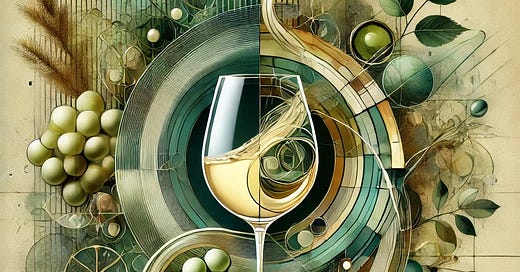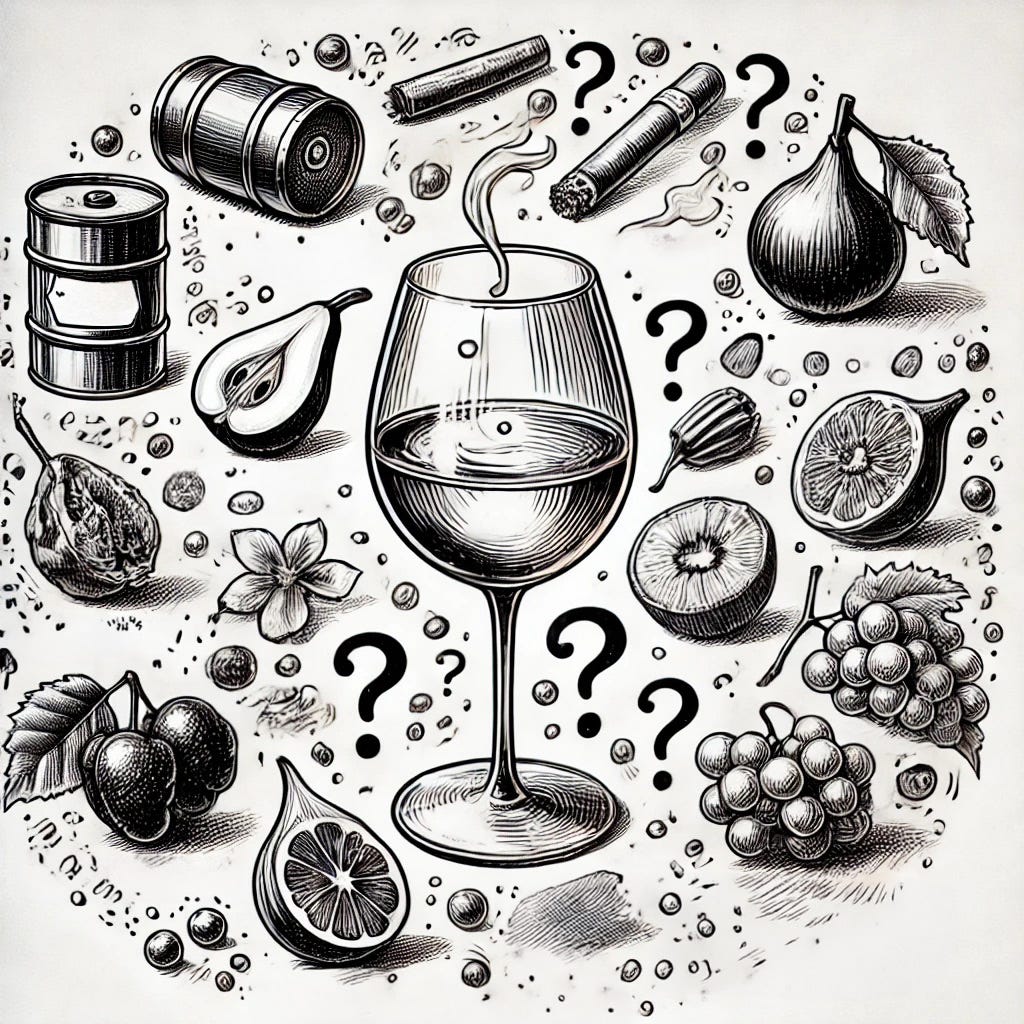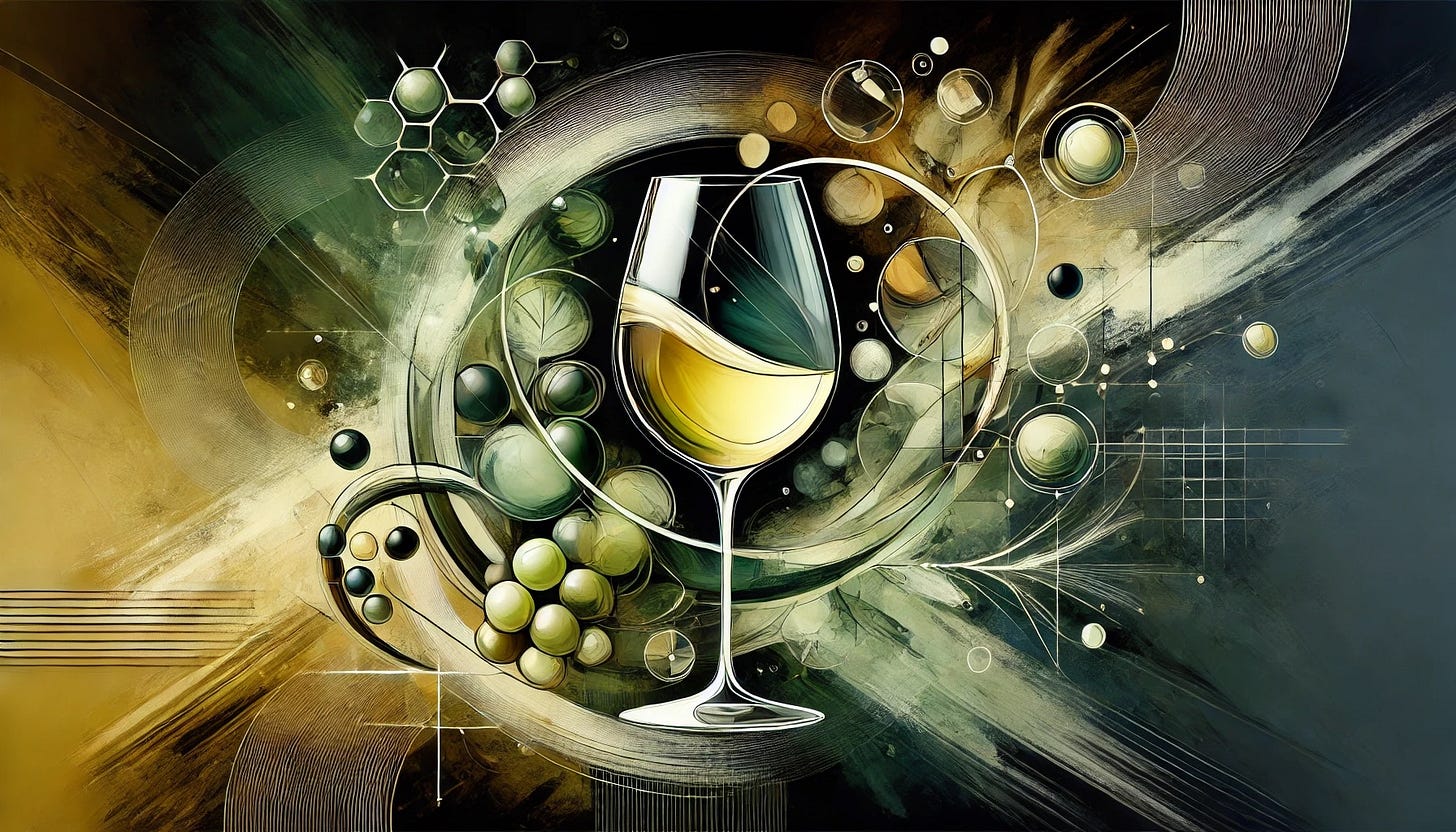NAPA VALLEY, Calif. — Is it possible that a wine that can smell like kerosene, cigar butts and wet hay might actually have a society dedicated to its greatness?
A few months ago I got together with eight other wine-lovers, all winemakers or professional wine-buyers. I served them a white wine without showing the label and asked them to identify the grape. Seven of eight said it was a dry riesling. The eighth said he believed it to be some kind of floral grape. All were wrong.
But those who identified it as a riesling were on the right track because the wine had a trace of what some people call petroleum and what, inside the industry, is technically called TDN, a chemical compound that adds a faint hint of something similar to kerosene. Despite the aroma suggesting spoilage, this particular grape delivers a trace of what makes older rieslings so interesting.
The wine I served was an older semillon, a relatively obscure grape with a long history in the European and Australian wine industries but that is planted in only scant amounts in California. It seems to be emotionally related to sauvignon blanc, and often the two are blended into one wine.
The California Grape Acreage report for 2000 showed that 1,337 acres of semillon were planted in the state in 1999. The most recent report showed that they had declined to only 550 acres planted statewide. Most semillon is planted in warmer regions such as the San Joaquin Valley, where it can make a wine with a richness not unlike that found in chardonnay.
But that’s only when it is picked later than it really ought to be. When picked at lower sugars, semillon emulates riesling and, like riesling, can age beautifully.
I wasn’t surprised that the professionals to whom I served this wine identified it as a riesling because for decades Australians called semillon from the Hunter Valley by the sobriquet “Hunter Valley Riesling.” When both wines are aged, they can be similar.
Of the many popular grape varieties that make table wines, semillon is relatively obscure. Even some wine-lovers know little about it. Part of the reason for that is simply that it usually is harvested when it is so ripe that it has an interesting aroma and a richness that California winemakers and owners can appreciate when it is young. But it doesn’t sell as a varietal wine.
I believe semillon deserves a lot more attention than it usually gets. Instead, it languishes in obscurity and yet performs a most admirable service to winemakers who really understand it in the vineyard. The few consumers who understand the wines that it makes adore it.
Several decades ago I joined with two close Napa Valley friends and six of us, including our wives, formed a tiny club to support semillon. For several years we staged annual dinners where the only wines served were from this grape. We even had T-shirts made up with the name of the group: the Semillonards. We haven’t had a club meeting in two decades. Only one person ever requested membership. He joined us for one dinner.
The number of Americans who love this grape is tiny. Of the few people who love dry semillon, most are Australian.
The facts of semillon’s life as a grape remain a mystery. It is yet to be determined how it was identified as a world-class grape in the first place, in view of its relative delicacy when it is a young wine. Moreover, it has this nasty propensity to rot on the vine. Oddly enough, this is not a bad thing when you know what to do with it. We’ll get to that later.
The wine I brought some months back to the winemaking group was 21 years old. It was a 2003 Brokenwood Semillon from the Oakey Creek Vineyard in the Hunter Valley. I had aged this wine in my cellar for 20 years, waiting for a special occasion to bring it to those knowledgeable enough to guess what it was. Had they been Australians, I think they would have identified it.
I have been writing about semillon for decades in my newspaper column but guessed that it would not be particularly interesting to most readers. I always assumed that the next morning my column would be lining a birdcage.
I find semillon to be one of a few dry white wines that can age for decades. On one of my 23 trips to Australia, I visited a winery in the Hunter Valley, 150 miles north of Sydney, where semillon flourishes. The winemaker, knowing of my love for this variety, served me the winery’s 1967 version. It was one of the greatest wines I have ever tasted. I’ll never forget the complexity — and the fact that it still had fruit in its aroma. Its alcohol was well below 12%.
Months later I was writing about semillon and recommended to readers that when they smelled a very young dry semillon that was harvested early, it likely would have no aroma. And when they tasted the same wine, it likely would have almost no taste. When the alcohol is down around 11%, you know you have a wine that will be best in 20 or 30 years. Semillons with too much aroma and taste don’t seem to age as reliably.
On the vine, semillon ripens early. It can be picked before heavy rains hit in continental climates. If left on the vine for extended periods, the flavors it produces can be richer but lacking in much distinction. Picked too late, dry semillon can be flabby and uninteresting, devoid of anything particularly inviting.
To make a dry wine from it, it is best with low alcohols and allowed to develop in the bottle. It is a rare bird, offering delicate or even neutral aromatics as a young wine. With its light stone fruit, faint herbal, dry or wet hay, fig and lanolin aromas and low alcohol, the wine is a shadow of the richness of chardonnay. It lacks the personality of a pinot blanc or the herbal pizzazz of sauvignon blanc.
To suggest that semillon can be a great wine requires a leap of faith. And since few people spend any time investigating semillon, very few are willing to invest the time (in the aging cellar) in a young, slightly built wine. Most people assume that because it has so little aroma or taste when it is young, that’s all it will ever deliver.
Something else about semillon actually detracts from its image — until you understand it. In some climates the wine it makes can have a faintly herbaceous kind of aroma, which occasionally has been described by the unattractive-sounding descriptors “tobacco” or “cigar butt.” Indeed, some of the finest semillons I have tasted over the decades did, in fact, display a faint kind of smoked cigar-y aroma.
However, it was a characteristic that wasn’t devoid of interest and intrigue since the aroma often was paired with what could be called dried or fresh figs, occasionally tropical in nature and with a peach-y sort of added complexity. And then there is that fascinating element of lanolin.
In Australia’s warmer Hunter Valley, with its cool nights, semillon has long grown into a mature adult in the cellars of wine-knowledgeable consumers who know of the wine’s affinity for time. Time is the key. I have had numerous old versions of well-made dry semillons going back 30 years. For the most part they are miraculous wines.
The grape also produces some of the greatest white wines in Bordeaux, and in those districts where it grows well, it makes superb dry whites. There it usually is paired with splashes of sauvignon blanc and then aged in barrels to give it added complexity. Because it comes from a continental climate, it rarely gets excessively ripe except when it is specifically grown to make some of the same district’s fabulous dessert wines.
As for Bordeaux dry whites, again aging the wines pays dividends. A 1967 Haut-Brion Blanc (mainly semillon) that we enjoyed in the mid-1980s when it was about 20 years old was a fabulous experience. And a 1971 Chateau Laville-Haut-Brion, which I bought in 1980 for $11, was so terrific in 1987 (at age 16) that it changed my opinion forever about this most humble grape.
In California, Livermore Valley semillons were sensational decades ago, in the 1970s and earlier. I liked wines from Concannon and Wente as well as a few from others in the area. Most are now long forgotten. One I recall was from Chris Lagiss at Livermore Valley Cellars, whose semillons were so little-known that even some local winemakers didn’t know he had made them. When Lagiss died in 2008 at age 92, I tried to find out more about semillon in Livermore. Outside of a handful of people who still made it, most asked me what I was talking about.
Some wineries, including several in Washington, once produced a blend of chardonnay and semillon, occasionally called SemChard. It was always tasty and usually a great value.
The real problem with semillon is one of style. I once saw a semillon with 14% alcohol. I was intrigued and bought it. It had the racy aroma of the variety but was so lacking in acidity that I was certain it would never age. It didn’t.
But can dry semillon be tasty as a young wine? Some of these wines can be somewhat appealing. But higher alcohols can interfere with the variety’s cellar potential. The best versions to develop have 11% alcohol – or less. I began learning about this in the 1970s when I visited Darrell Corti at his amazing Sacramento wine emporium, Corti Bros.
The 14% alcohol version that I tried left me with the impression that this was a wine in search of a persona. Its flabbiness made it uninteresting as a food companion.
No discussion of semillon would be complete without the highest praise for Sauternes, that miraculous dessert wine based on semillon and headed by the exemplary Chateau d’Yquem. Top-rate Sauternes is a magic potion worthy of any praises anyone can conjure. It comes from fruit that was affected by what is called a noble rot, which concentrates the juice and imparts a trace of honey to the aroma.
Even mediocre Sauternes (as well as Barsac and wines from three nearby subdistricts) can deliver pure succulence — even though some of the lesser houses make wines that also have aromas with traces of sweat socks.
Yquem, which is normally a blend of semillon and sauvignon blanc, is a miracle due to its impeccable vineyards and its precise production techniques. The current release of this wine is extremely hard to find, and if you do find it, the price will be approximately $400 per bottle.
The way Sauternes is produced is to wait until the grapes develop a beneficial mold called Botrytis cinerea, which reduces the water inside the grapes and helps to create additional flavors in the almost syrupy wine. The “noble rot” helps to transmogrify the fruit, leaving it with that alluring honey. To see completely botrytised grapes can be off-putting, but the resulting wine is an amazing elixir.
In Napa Valley, Beringer’s historic dessert-style semillon called Nightingale is an homage to the late husband-wife team of Myron and Alice Nightingale, who created the unique process by which the wine was made. It began in Livermore Valley in the 1950s. It was called Premier Semillon and was Cresta Blanca’s finest wine. Beringer’s 2016 Nightingale is sold out.
For me, the classic example of dry, age-worthy semillon comes from Brokenwood in Australia. Every vintage produced by this stellar property improves in the bottle — despite alcohol levels that are almost never above 11%. The secret is high acidity.
Ten years ago, a fine wine writer, Tyson Stelzer, called the 2011 Brokenwood semillon “a mesmerizing paradox ... it can live for 30 years.” He was right. I still have one bottle of that wine, and the last time I tasted it, I believed it would be best in another 20 years. I recall when it was released. The aroma was slightly lemony with a faint grassy note, not unlike sauvignon blanc but with a delicate hint of lanolin.
Old Bridge Cellars, an import company based in Napa Valley, currently has several different versions of the Brokenwood semillons.
2022 Hunter Valley ($21): Delicate and pale, this lower alcohol (11%) green/gold wine has the evanescent aroma of green apples and pine/jasmine. Crisp and delicate, it really does not call for much chilling at this stage and is probably best decanted for several hours before serving. Best in 10-15 years or decanted well before consuming.
2018 Hunter Valley, Oakey Creek Vineyard ($34): More complex than the prior wine and still fresh and spritely. The aroma is distinctly minerally with lime and green tea notes. Again, decant for at least an hour. The 2017 vintage may still be available.
2017 Hunter Valley, ILR Reserve ($75): One of the finest white wines I have ever tasted that illustrates both its grape variety as well as its subregion. Overwhelming complexity has already begun to creep into this wine, and it really does require at least a few more years before drinking. But if you open it now and give it plenty of aeration, the wine is a remarkable experience with hints of lanolin, fig, chamomile tea, olive oil (!) and exotic minerality. Although it has yet to display its riesling-like TDN notes, which it will after it has been in the bottle for some time, it opens up slowly to display what it might turn into in a few years. If you like really dry wine, you will love this.
Old Bridge has a license that allows it to sell directly to consumers, and they can take orders at 800-622-2234. The vice president of marketing is Gavin Speight. Since the company is based in the city of Napa, locals can pick up their wines at Old Bridge’s offices. Incidentally, the Old Bridge portfolio is loaded with unbelievable wine values from Australia.
Semillon can be planted in regions as warm as the Napa Valley (Australia’s Hunter is hot), but it can make a classic dry wine only where the winemaking is so locked-in that fruit can be harvested early enough to capture the minerally aspects of the grape. You can probably count the number of Napa Valley semillons on one hand. Few are distinctive enough to recommend. At 14% alcohol, semillon typically is clumsy and usually fails to display its unique flavors or minerally-ness.
Wine Discovery
2023 Whitehall Lane Semillon, Rutherford, Estate Bottled ($34) — I never believed that a classic dry semillon existed in Napa Valley, but visiting the Whitehall Lane tasting room a few days ago I was shocked when I smelled winemaker Jason Moulton’s latest effort. The aromatics in this wine combine some of the slight minerality of the grape with trace notes of tropical fruit, which I assume is an element of the Rutherford personality. But it also must be a result of Moulton’s personal background. He was educated in making world-class wines at Lincoln University in New Zealand, where he had opportunities to try Australia’s best semillons, and he knew that to make a great one required harvesting early. A small amount of sauvignon blanc was added to this wine and contributes excellently to its overall aroma. But the wine’s appealing structure is based on aging in large neutral oak puncheons.
I tried this wine when it was very cold, and it still showed well. With only 12.8% alcohol, it clearly was designed to display the variety, but its overall richness and spice are based on Moulton’s ability to capture its natural fruit, which differs a bit from Australian versions. I can imagine serving this cold on a hot patio, but because of the historical longevity of the variety, I would love to see it paired with scallops and not served particularly cold — in about two or three years.
If today's story captured your interest, explore these related articles:
Dan Berger has been writing about wine since 1975.








Excellent coverage of frequently overlooked wines. Thank you…